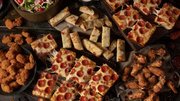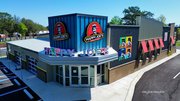News
FINANCIAL MANAGEMENT: Sharpening your pizza menu IQ, Part 1
As Jim Laube points out, do not do these six things when developing or changing your pizzeria's menu.
February 15, 2004
A 25-year veteran of the restaurant industry, Jim is the owner and operator ofRestaurantOwner.com, and a sought-after industry speaker.
Everyone knows that the menu is an important part of any restaurant. But many independent operators either don't realize the profound impact the menu has on their bottom line or they underestimate it. In part one of this two part article, we'll cover what NOT to do, menu practices that can hinder your profitability.
Menu Don'ts
1. Don't use plastic laminated menus. They're expensive and can keep you from making needed menu changes on a regular basis. Plastic covers with the appropriate paper inserts can give you the look you want and more flexibility in terms of being able to change your menu quickly
 |
Jim Laube |
2. Don't place items within a menu section in any type of order. When your menu items are shown vertically, one below the other, make sure the ones you want to sell most are shown first and last. Numerous surveys show that items in the top and bottom positions are typically the biggest sellers, while the ones in the middle tend to get overlooked and selected less often. Place your less popular and profitable items in the middle.
3. Don't overlook the kids. For families with kids, the kid's menu is a big deal. You must have an effective game plan for addressing the wants and needs of children if you want to attract families with kids. Numerous consumer surveys tell us that children today play a major role in deciding where the family eats. With kids, anything you can do to make the food fun and involve them will be noticed and appreciated. One restaurant I visited does something very effective with their kid's cheese pizza. They bring the dough, pasta, cheese and pepperoni to the table so the kids get to make their own pizza. Very popular.
4. Don't do "across the board" price changes. The price of raw materials changes, so eventually you'll have to increase prices. When you do, don't change prices on a large number of items at one time. When you do, there is a greater potential for customers to notice and react negatively.
Instead, perform surgical price increases on a few items at a time. Consider changing prices more frequently, at least two or three times a year so you're not forced to make wholesale price increases when you do.
5. Don't end your price points with 0's or 5's. Every price point on your menu should end in a 9. If your price points currently end in 5's, multiply the number of items you sell annually by 4 cents and that's the impact this simple little change could have on your annual net income.
6. Don't price your menu items solely on an item's food cost. Consider local "market prices" by examining your competitor's price points for similar items. Be sure to take quality and portion sizes differences into account. Base your pricing decisions on an item's food cost and local "market prices."
Next month we'll cover some key Menu Do's, practices that will result in making your menu a more effective profit-building tool.
Other articles by Jim Laube ...
* FINANCIAL MANAGEMENT: Profits say a lot about a business, but an employee survey may say more.
* FINANCIAL MANAGEMENT: Every restaurant needs a "no nibbling" policy
* FINANCIAL MANAGEMENT: To skim or not to skim?
* FINANCIAL MANAGEMENT: Making menu pricing easier and more profitable
* FINANCIAL MANAGEMENT: How much money should your restaurant be making?
*FINANCIAL MANAGEMENT: Educate your staff about the cost of your business
* FINANCIAL MANAGEMENT: Know your numbers
*FINANCIAL MANAGEMENT: Preparing a monthly P&L won't give you the best numbers










